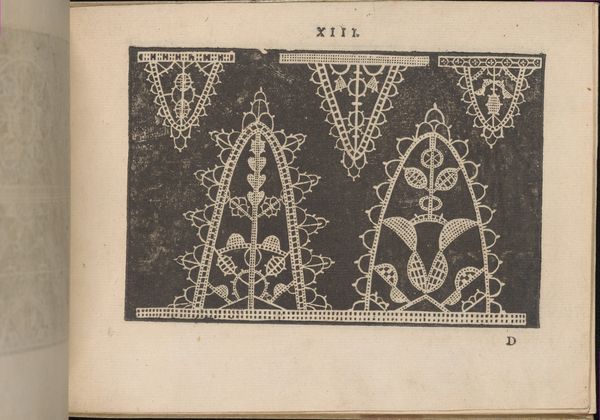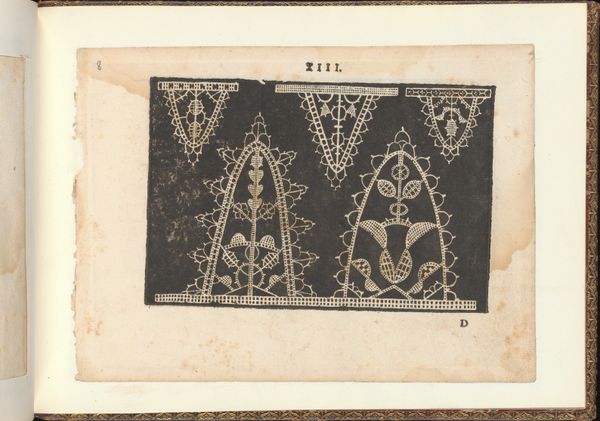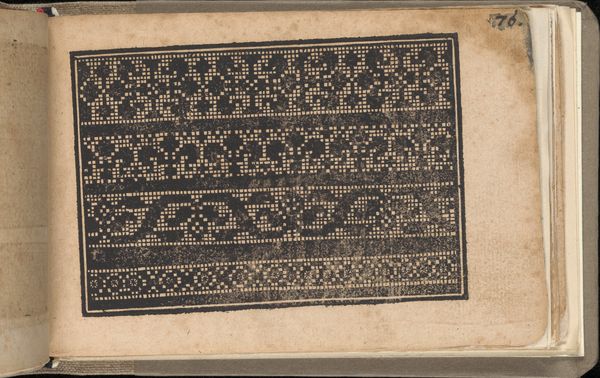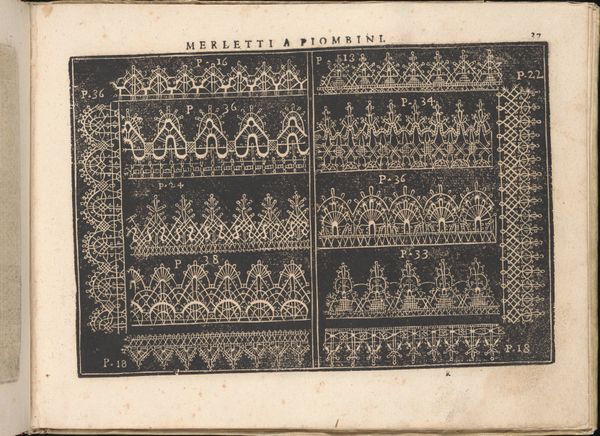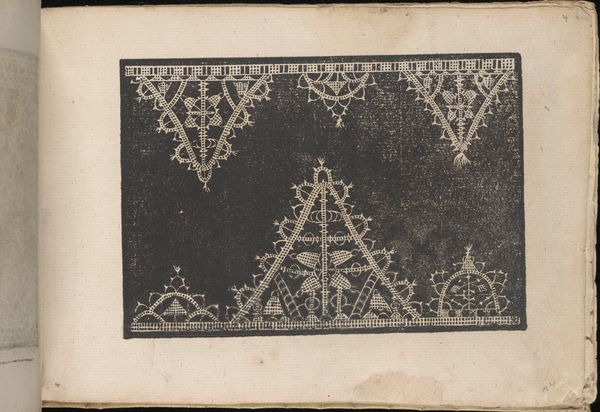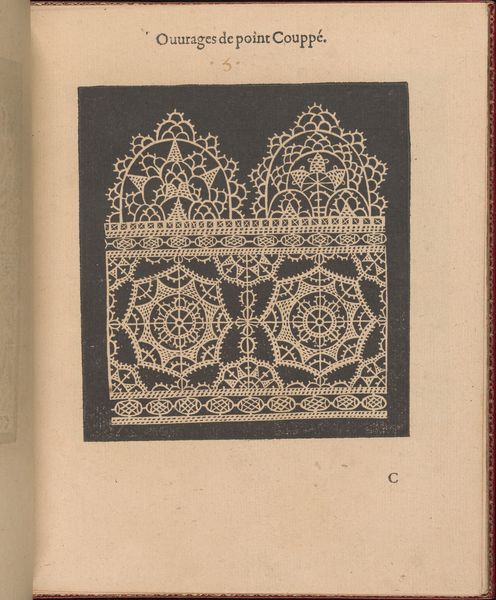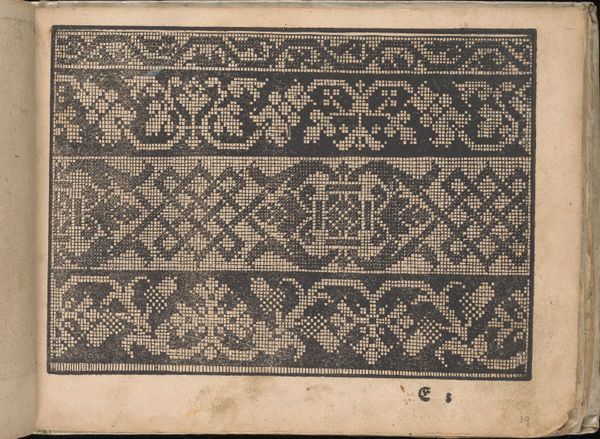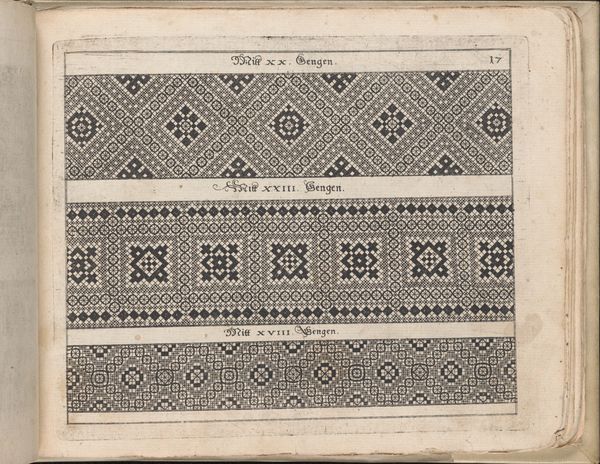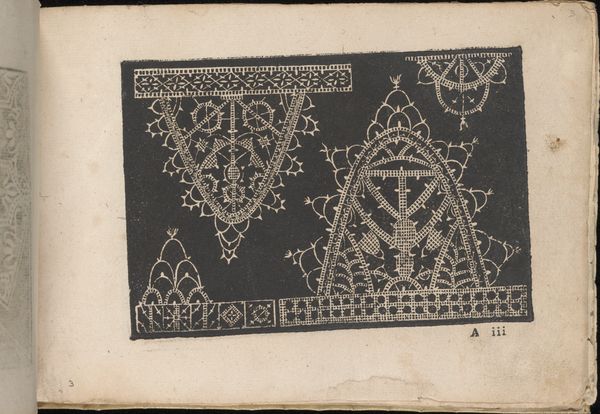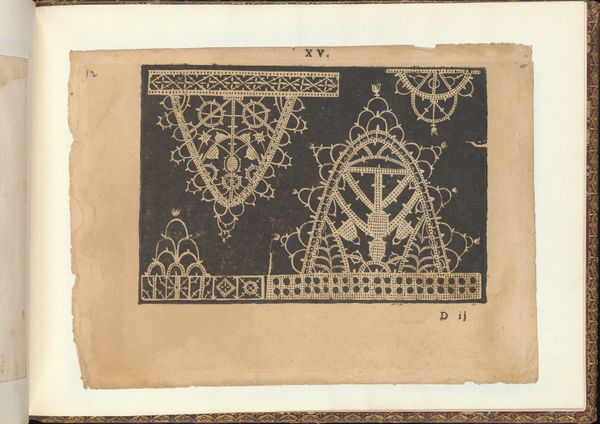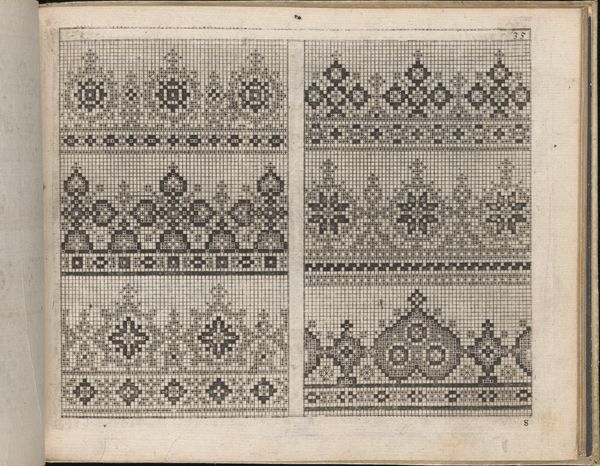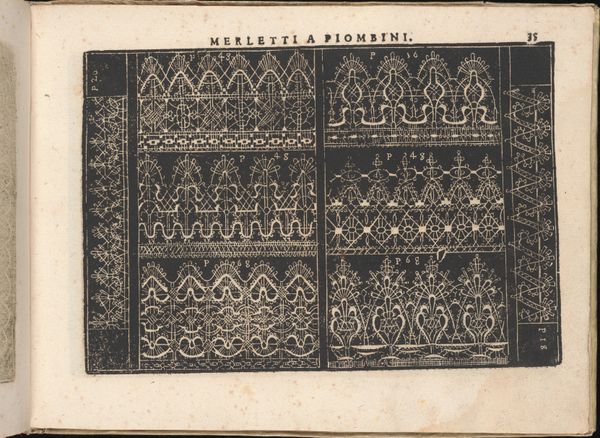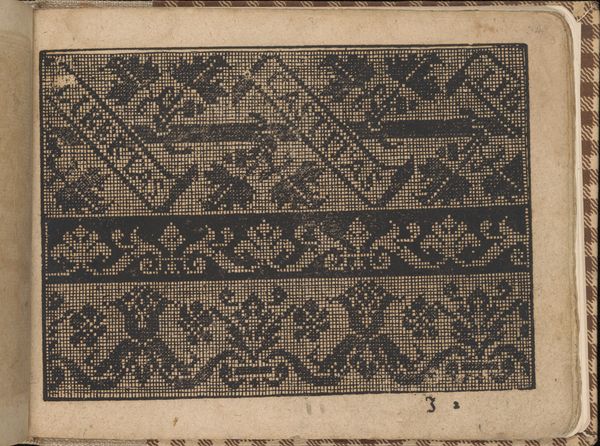
Fiori di Ricami Nuovamente Posti in Luce, page 10 (recto) 1591
0:00
0:00
drawing, print, paper, woodcut
#
drawing
# print
#
paper
#
woodcut
#
italian-renaissance
Dimensions: Overall: 5 1/2 x 7 7/8 in. (14 x 20 cm)
Copyright: Public Domain
This is page 10 from "Fiori di Ricami Nuovamente Posti in Luce," a book of lace patterns created by Matteo Florimi around the turn of the 17th century. During this time, pattern books were essential resources in Europe, and were particularly important for women, both amateur and professional, who practiced needlework. These delicate patterns provide insight into the daily lives of women during the Renaissance, who were central to the creation, use, and transmission of these designs. Lace-making was seen as a virtuous activity, reflecting a woman's skill, patience, and domesticity. The geometric and floral motifs can be seen as a reflection of the natural world and the order that women were expected to bring to their households. What might these patterns tell us about gender roles and expectations? Consider the labor-intensive nature of lace-making and how it intersected with ideas of femininity, value, and identity. Can you imagine the hands that painstakingly brought these patterns to life?
Comments
No comments
Be the first to comment and join the conversation on the ultimate creative platform.
